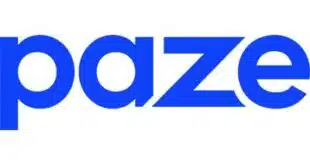By Jim Daly
With the much-heralded EMV liability shift now less than a month away, the United States could be likened to briskly walking, though hardly running, toward the finish line of full-fledged chip card payments.
New figures provided by Visa Inc. to Digital Transactions News on Friday show that as of July, 18% of the 720 million Visa-branded credit, debit and prepaid cards in the U.S. contained an EMV chip.
Meanwhile, some 295,000 merchant locations were enabled for chip card acceptance at the end of July, up 19% from 247,000 at the end of June but still far short of the country’s approximately 8 million card-accepting locations.
Also, some 36,663 ATMs, about 7% of the estimated 535,800 bank and retail ATMs in the U.S., can now read EMV chip cards, Stephanie Ericksen, vice president of risk products at Visa, tells Digital Transactions News.
Merchants and card issuers face a major EMV deadline on Oct. 1, when the so-called liability shifts adopted by the leading payment networks take effect. The shifts will assign liability for counterfeit fraud to the party in a card transaction, issuer or merchant, that doesn’t support EMV. Similar liability shifts will follow in 2016 for ATMs and in 2017 for fuel pumps at gas stations.
Payments-industry analysts have been saying for months that a full conversion from fraud-prone magnetic-stripe cards to more secure EMV cards will take years, and that’s also the thinking at Visa. According to Ericksen, it typically took about three years after the liability shifts in other EMV countries before 90% of payment card transactions were “chip-on-chip,” or generated by an EMV card used at an EMV terminal.
“We really see Oct. 1 as the starting point, not the endpoint,” she says of the U.S. conversion. “I think we’re really on pace to where we should get.”
Large merchants are leading the way in EMV acceptance. For example, Target Corp., which doubled-down on its chip card conversion after its huge late-2013 data breach, reported last month that it has completed its in-store terminal deployments and is now turning its attention to reissuing its Target-branded credit and debit cards with chips. According to Ericksen, many big merchants are adding EMV terminals and testing them, but most are waiting until the liability shift to turn them on.
Small merchants, often considered EMV laggards, actually are generating 59% of Visa’s current chip-on-chip volume, which Visa has not disclosed. Small businesses’ high share of EMV volume arises from their less-complex point-of-sale systems than those of large merchants. “There’s continuing rollout in the small-business segment that have rather simple plug-and-play” terminals or tablet-based POS systems, says Ericksen.
On the issuing side, analysts have predicted that banks and credit unions will convert their credit card portfolios faster than their debit portfolios, in part because EMV debit cards present complex technical challenges in meeting the transaction-routing requirements of the Dodd-Frank Act’s Durbin Amendment. The latest Visa numbers confirm those predictions: Of the 126.9 million Visa EMV cards in issue as of July, 80.8 million, or 63%, were credit and 46.1 million were debit and prepaid.
But while issuers are “continuing to roll out credit steadily,” Ericksen says EMV debit card issuance has increased in the past couple of months.
The debit ramp-up comes as issuers, merchant acquirers and payment networks complete work on the so-called common AID, or application identifier, to ensure that PIN-debit networks have access to transactions originating on Visa- or MasterCard-branded debit cards, as required by the Durbin Amendment. “We’ve certainly seen a major uptick in debit issuance with the common AID supported,” says Ericksen.
Visa expects to have August EMV numbers some time in mid-September.





